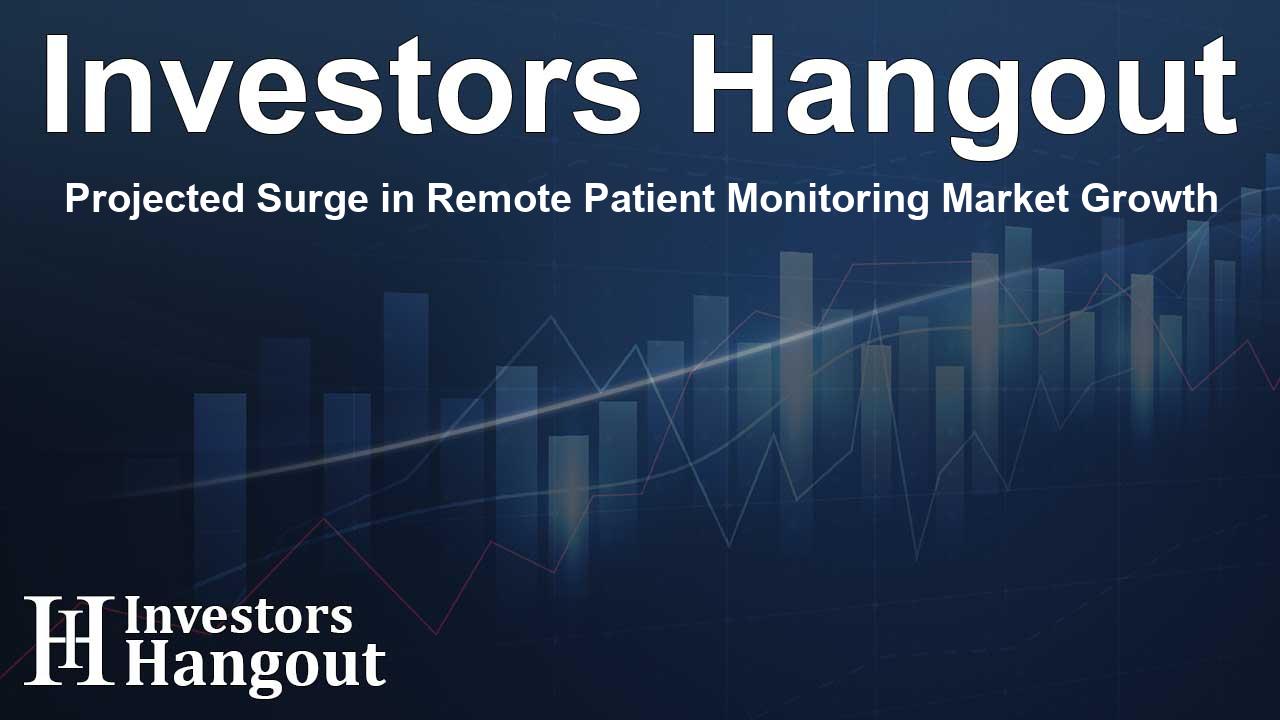Projected Surge in Remote Patient Monitoring Market Growth

Overview of the Remote Patient Monitoring Market
As we look ahead, the US remote patient monitoring (RPM) market is on a path of remarkable growth. This market, valued at approximately US$14.15 billion in 2024, is expected to soar to US$29.13 billion by 2030, reflecting a strong compound annual growth rate (CAGR) of 12.8%. Several factors are driving this shift, particularly the growing aging population and the increasing demand for cost-effective healthcare solutions. The significance of this market cannot be overstated, especially as the US demographic landscape shifts.
Demographic Trends in Healthcare
With projections indicating the US population aged 65 and older will increase from 58 million in 2022 to 82 million by 2050, there is a pronounced necessity for remote patient monitoring systems. This shift represents a 47% increase, marking a transformation in the healthcare landscape where seniors, making up 17% of the total population, will climb to approximately 23%. The integration of technologies to cater to this demographic is paramount as they typically require ongoing care.
Technological Solutions Fostering Growth
Noteworthy innovators like Boston Scientific Corporation, Abbott, and Dexcom are enhancing the RPM systems through advanced digital biomarkers and artificial intelligence-driven analytics. These technologies enable healthcare providers to monitor patients remotely, facilitating better management of chronic conditions.
Government Initiatives Supporting RPM
Government support is becoming instrumental in promoting RPM, particularly through Medicare reimbursements for RPM services and programs designed to enable hospital-level care at home. This endorsement from governmental bodies is accelerating the adoption of RPM, making it a viable option for healthcare providers and patients alike.
Device Segmentation Making an Impact
The RPM market is broadly segmented into devices, software, and services. Currently, the device segment is anticipated to dominate the market share, reflecting recent advancements and innovations. For instance, the FDA's clearance in March 2024 for Dexcom's Stelo glucose biosensor represents a significant step forward, allowing continuous glucose monitoring through a connection to smartphones.
Increasing Patient Engagement through Technology
The patient segment within RPM is experiencing swift growth, fueled by heightened awareness and a rising prevalence of chronic illnesses. The explosion in wearable technology and mobile health applications is empowering patients to take charge of their health data actively. An example of this progression is GE HealthCare's Portrait Mobile monitoring solution, which recently received FDA clearance, offering real-time insights into patient vitals.
Focus on Various Health Indications
Different health areas within RPM like cardiology, diabetes, oncology, and mental health are driving significant market growth. The cardiology sector, in particular, commands the largest share as cardiovascular diseases remain a prevalent health crisis in the US. Alarmingly, around 2,300 individuals die daily from cardiovascular-related issues. To combat this, innovations like AliveCor's Kardia 12L ECG system, which detects multiple cardiac conditions, are instrumental in promoting wellness.
Market Players Leading the Charge
Market dynamics are further enhanced by competition among key players, including GE HealthCare, Oracle, and Abbott, each contributing to advancements in RPM technologies. Their investments in new solutions and systems signal a commitment to transforming healthcare delivery.
The Future of RPM
Looking ahead, the momentum of the RPM market appears robust, supported by demographic needs and technological advancements. With a focus on delivering patient-centric care, the upcoming years will likely witness even more innovative solutions emerging, further enriching the healthcare landscape.
Frequently Asked Questions
What is the expected growth rate of the US remote patient monitoring market?
The market is projected to grow at a CAGR of 12.8%, reaching US$29.13 billion by 2030.
What factors are driving the growth of remote patient monitoring?
The increasing number of elderly individuals and demand for cost-effective healthcare solutions are key drivers.
Which companies are prominent in the remote patient monitoring space?
Companies like GE HealthCare, Boston Scientific Corporation, and Abbott are significant players in the market.
How does patient engagement relate to remote patient monitoring?
Advancements in wearable devices and mobile applications are increasing patient engagement and self-management of health data.
What segments are included in the remote patient monitoring market?
Segments include devices, software, and services, with particular focus on areas like cardiology and diabetic care.
About The Author
Contact Kelly Martin privately here. Or send an email with ATTN: Kelly Martin as the subject to contact@investorshangout.com.
About Investors Hangout
Investors Hangout is a leading online stock forum for financial discussion and learning, offering a wide range of free tools and resources. It draws in traders of all levels, who exchange market knowledge, investigate trading tactics, and keep an eye on industry developments in real time. Featuring financial articles, stock message boards, quotes, charts, company profiles, and live news updates. Through cooperative learning and a wealth of informational resources, it helps users from novices creating their first portfolios to experts honing their techniques. Join Investors Hangout today: https://investorshangout.com/
The content of this article is based on factual, publicly available information and does not represent legal, financial, or investment advice. Investors Hangout does not offer financial advice, and the author is not a licensed financial advisor. Consult a qualified advisor before making any financial or investment decisions based on this article. This article should not be considered advice to purchase, sell, or hold any securities or other investments. If any of the material provided here is inaccurate, please contact us for corrections.
